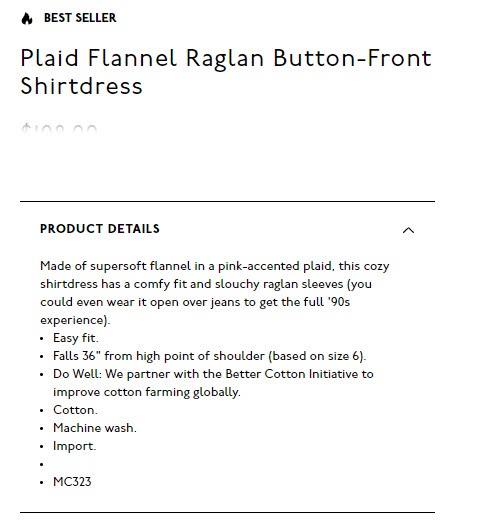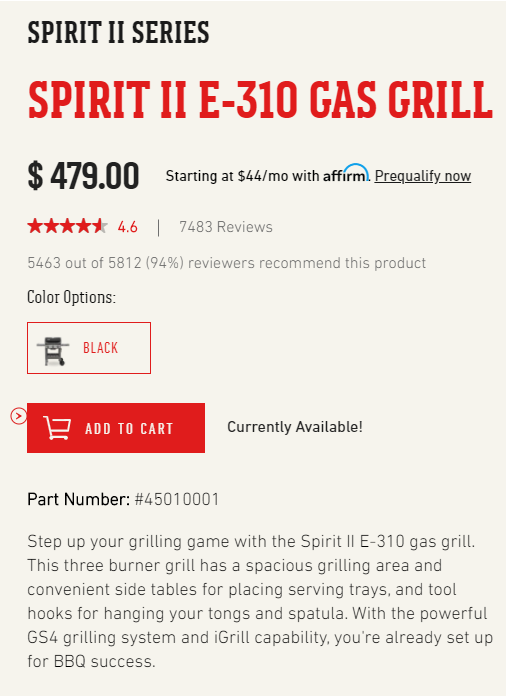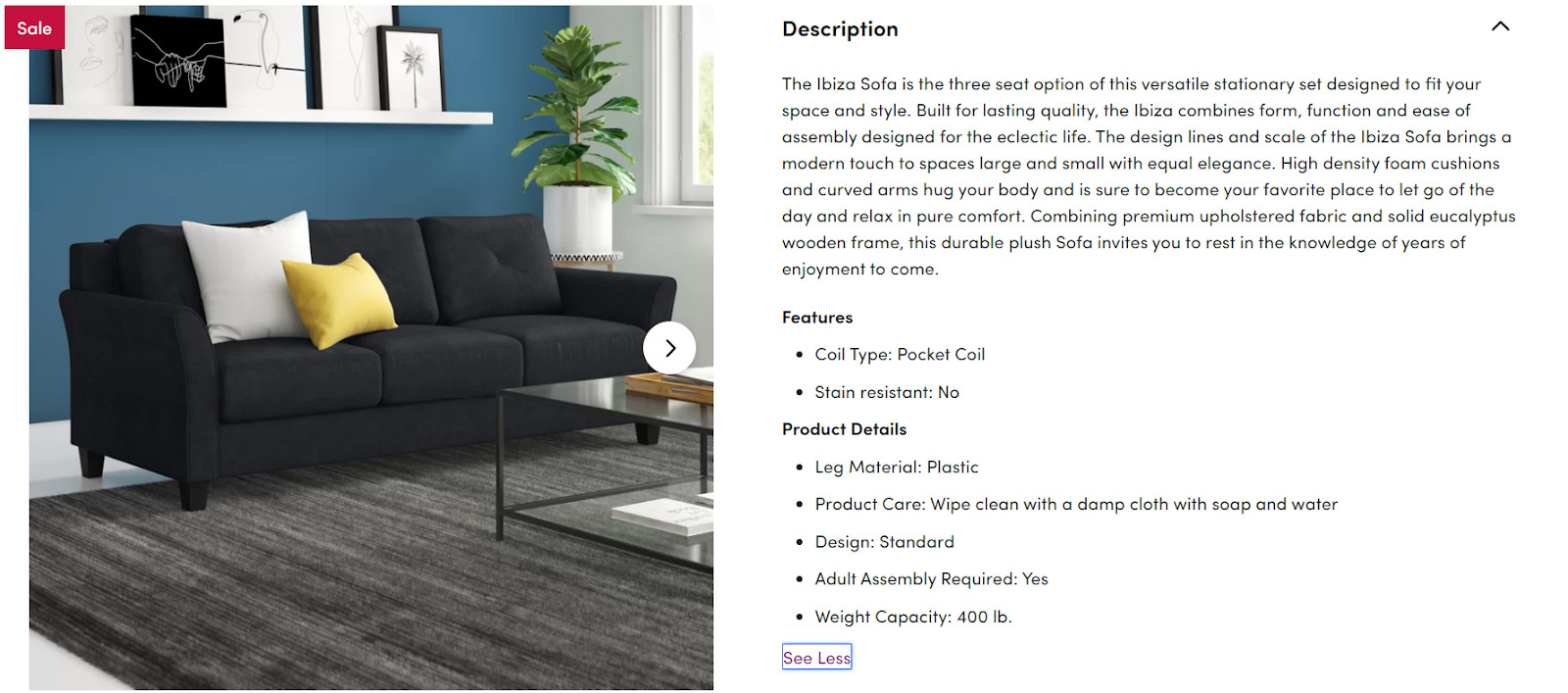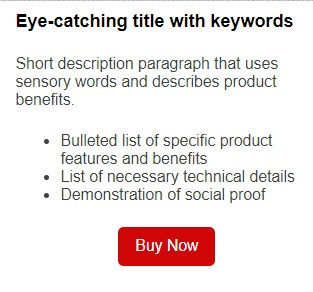It’s no secret that strong product descriptions are an essential part of marketing. The product description is one of the last things your customers will see before deciding whether to make a purchase.
There’s a big difference between writing a generic description of your product and writing a product description that sells. Your product descriptions can be much more than a dry list of product features. Instead, they can be the final nudge that convinces your customers to click “buy.”
Why are product descriptions important?
At heart, a product description isn’t just a list of features; it’s an argument. You’re arguing for your product, giving reasons why it’s worth the money. If your customer is at all on the fence when they make it to a product page, the product description is your final chance to convince them to make a purchase.
A great product description tells your customers three things:
- Your product’s features
- The problems your product solves or the benefits it provides
- How your customer will feel after buying it
The first element is practical, but the second two are what make the sale. People make buying decisions based on emotions, so your product description should include the features they want and a compelling story about how they’ll use it.
Considerations for product descriptions
To highlight the right benefits and tell a convincing story in your product description, there are a few considerations you should keep in mind. These will help you shape the product description to appeal to the people most likely to buy in the first place.
Your ideal buyer’s needs
Every product you sell should be tailored to meet the needs of your ideal buyer. Every company has an ideal buyer or target audience. Your ideal buyer may be a mid-twenties career woman, or they may be a retired grandfather who likes fishing. Regardless of your ideal buyer’s demographics, what’s important is that you have a clear idea of how your product will meet their needs and fit into their lives.
When you’re writing your product description, keep in mind how your product will serve your ideal buyer’s needs, and emphasize those aspects. A young career woman may appreciate a product that saves time while looking stylish. A grandfather may want a product that can help him bond with the kids. Focus on their needs and you’ll have a great idea of where to start.
SEO keywords
On a more practical level, your product descriptions are an excellent place to use targeting SEO keywords. Do some keyword research and see what words and phrases people search to find your site.
SEO keywords can be listed as product features, included in the product title, or worked into the body of the product description itself as long as it still flows naturally. Good SEO can bring people directly to your product’s page, making the sale more straightforward.
Sensory words
Sensory words are an excellent way to engage your audience with your product. These types of descriptive words can act as a sort of shortcut past objections and skepticism. Words like “fresh,” “clean,” “bright,” “calm,” or “velvety” all elicit emotional responses. They help potential customers imagine the product’s story more clearly.
Research shows that people who have a clearer mental picture of using a product in their everyday lives are more likely to buy. Including sensory words in your product descriptions can help you boost sales.
Social proof
Finally, including social proof in a product description is a powerful tool. Social proof is any sign that other people also purchased, used, and enjoyed the product. Great reviews, mentions of places that use your product, or “as seen in” blurbs all demonstrate that your product is not just useful — it’s also popular.
Studies have shown that perceived popularity can lead to further popularity, which can lead to a positive feedback loop for your business.
Strong product description examples
Understanding the theory of writing great product descriptions is different from writing descriptions that sell. Here are three examples of actual, excellent product descriptions and why they work.
Madewell
The words “Best Seller” above the product’s name not only provide social proof, but can also induce fear of missing out (FOMO) before a potential buyer even gets to the body of the description.
This product description, of a flannel shirt, demonstrates its clear grasp on Madewell’s target demographic. Many of Madewell’s customers are young women who are environmentally conscious. Madewell uses casual language and references popular ‘90s nostalgia in the body of the description, then mentions its commitment to the environment in the bulleted list.
Madewell also uses an effective format for its description. By keeping the basic details contained to a bulleted list, they are free to use more sensory words and provide examples of daily use in the body of the description. This technique keeps their description vivid, concise, and easily scannable.
Weber
The Weber Grill description is just below its star rating, offering a potent example of social proof.
Weber’s grill description includes sensory words, “spacious” and “powerful”, it explains the benefits it offers with statements like “step up your grilling game” and “you’re already set up for BBQ succes,” it lists it’s features along with their uses, and it prominently demonstrates social proof by placing the description just below the reviews. With a 4.6-star rating out of 7,483 reviews, this is definately a grill that others enjoy using.
Wayfair
Wayfair’s description of their Ibiza Flared Arm Sofa uses sensory words to encourage customers to imagine sinking into the sofa.
The furniture retailer Wayfair understands how to appeal to customers’ emotions and senses. It uses words like “hug,” “comfort,” and “plush” to help people imagine sitting on the couch. Meanwhile, it includes more practical product features and details below the emotional description, so buyers with specific needs can easily scan for what they need.
Creating an effective product description template
How do these brands create such strong, effective product descriptions? They likely have a template behind the scenes. A template can help you put together great product descriptions every time without having to regularly reinvent the wheel.
There are four questions to ask yourself while building a product description:
- Who is the product for?
- Why do they need it?
- What makes this product stand out?
- What are the product’s details?
Answering these four questions gives you the meat of what a great product description will include.
Your product description template might look something like this:
No matter the order, make sure you include all of the elements of an effective product description to increase your odds of making the sale.
Once you have a template that has helped you generate a few great product descriptions, you can continue to refine your process. The perfect product description is the one that helps you sell. And what helps you sell can vary significantly, depending on your unique buyer demographic, so don’t be afraid to make tweaks and experiment.
Next steps
Now that you know why product descriptions are important, what makes a product description effective, and how to write a great product description every time, it’s time to reevaluate the product descriptions you already have.
You’ll probably notice a few elements of your descriptions that you can improve with a quick rewrite. Take the time to revise your product descriptions keeping the above ideas in mind, and odds are you’ll be impressed — not only with your writing skills, but with your new sales numbers as well.
Read more:



